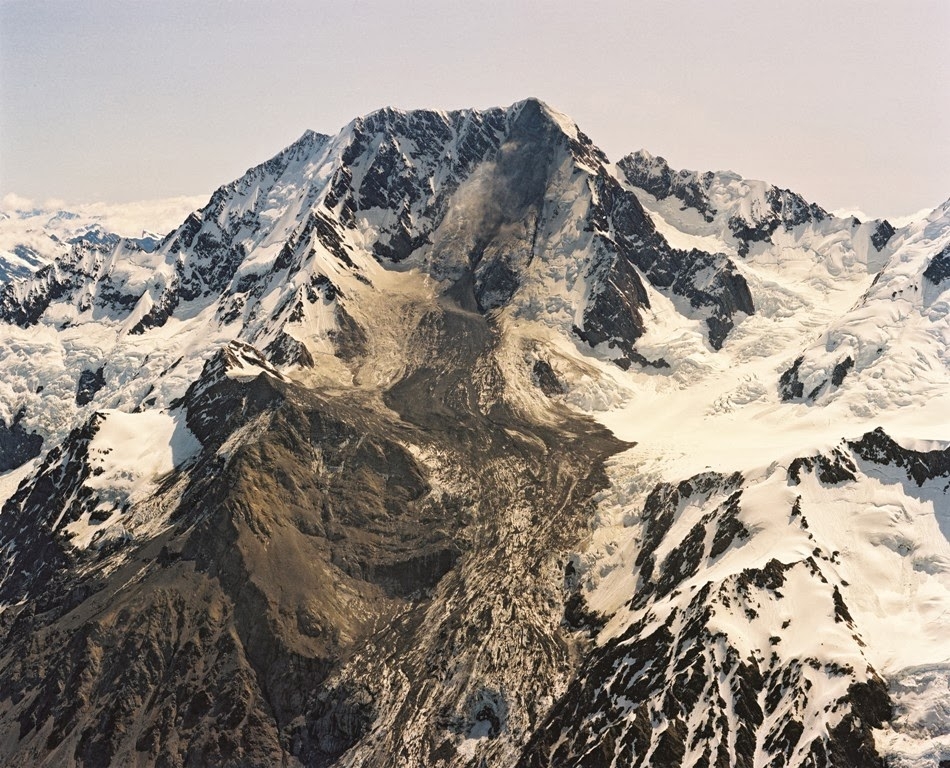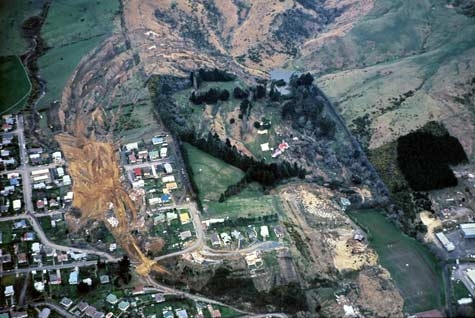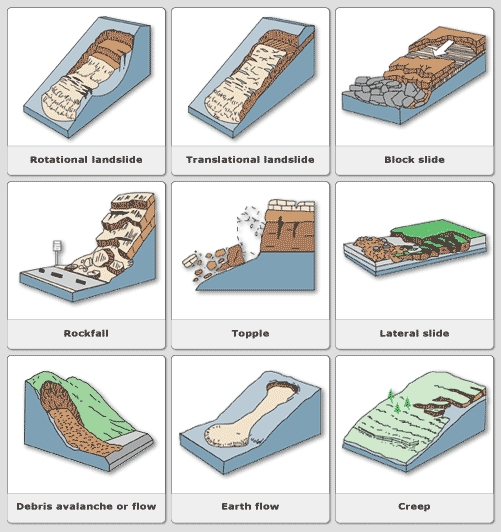Unstable land
New Zealand has a high number of landslides because:
- land is still being pushed up by plate tectonics
- rocks are often weak from this movement
- there are lots of earthquakes
- the land is hilly and cut by rivers
- slopes can be unstable, weak layers of volcanic ash or loess
- rainfall can be high.
Some landslides move whole mountain sides, suddenly. Others are small or slow, moving only a few centimetres a year.
Causes
On unstable slopes, three things are important in causing large landslides:
- type of land, such as weak rock and steep slopes
- processes such as deforestation or stream erosion
- large rainstorms and large earthquakes.
Human impact
Clearing forest has had the most impact on how stable the land is. Clearing land for farming has increased landslide activity. Building roads and subdivision earthworks can also increase landslide rates.
Cost
Each year millions of dollars is spent clearing slips from roads and railway lines. It is a never-ending task – there are always more floods or earthquakes to come, and there is plenty of rock and soil waiting to fall down.
In general, landslides are more common in New Zealand than many countries because of the steep land, weak layers and high rainfall. However, landslides cause few deaths in New Zealand because there are not many people living in steep, mountain areas.
Before
- Find out if there have been landslides in your area before and where they might happen again.
- Check for signs that the ground may be moving.
- Watch the roadside for collapsed pavements, mud and fallen rocks.
During
- Act quickly - getting out of the path of a landslide is your best protection.
- Evacuate straight away. Take getaway items with you and your pets if you can safely do so.
- Warn neighbours who might be affected and help those you are able to.
- Contact emergency services and your local council to tell them of the hazard.
After
- Do not return to the area until you are told it is safe.
- Avoid dangling and broken power lines.











